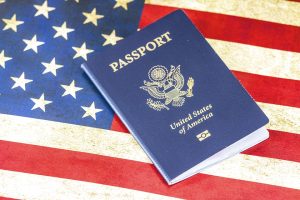How to Obtain a Driver’s License in the USA: Requirements and Process, Insurance

Driver’s licenses are an integral part of life for many people in the United States. Whether you need to drive a car for work, personal matters, or just for pleasure, knowing the requirements and process for obtaining a driver’s license is essential. In this article, we will review the basic requirements for obtaining a driver’s license in the USA, the process of getting one, traffic rules, and the importance of car insurance.
Requirements for Obtaining a Driver’s License
Age Restrictions
Age restrictions are an important aspect of obtaining a driver’s license in the USA, as they determine when a person can begin driving. Each state may have different rules and requirements regarding the minimum age for obtaining a license. For example, in most states, the minimum age to obtain a license to drive a passenger car is 16 years. This means that at 16, a person can take theoretical and practical exams to get a driver’s license. However, in some states, the age limit may be increased or decreased. For instance, in some states, the minimum age may be raised to 17 or 18, especially for driving in certain conditions, such as at night or with passengers.
Some states may also implement a graduated licensing system where young drivers start with restricted licenses and gradually gain more freedom on the road as they accumulate experience and reach a certain age. For example, there may be restrictions on the number of passengers or night driving for young drivers until a certain age. Therefore, it is important to familiarize yourself with the specific rules and requirements of the state where you plan to obtain a driver’s license to be aware of age restrictions and licensing conditions.
Legal Status and Citizenship
Legal status and citizenship are important factors when obtaining a driver’s license in the USA. To be eligible for the licensing process, you must have legal status in the country or be a U.S. citizen. This requirement is in place for several reasons.
Firstly, the U.S. government requires proof of the applicant’s personal identification. This may involve providing documents such as a passport, green card, Social Security card, and proof of residence. These documents help ensure that the applicant is a legal U.S. resident and eligible for a driver’s license.
Secondly, criminal background checks are a key aspect of the licensing process. The government aims to ensure road safety and prevent the issuance of licenses to individuals with serious legal violations. Criminal background checks help verify that you do not have any serious crimes or violations that could negatively impact your ability to drive safely.
Thus, if the applicant holds a green card, they can present this document as proof of their legal status in the USA. The green card, officially known as the Permanent Resident Card, is issued to immigrants who have permission for permanent residency in the USA. This document confirms that the applicant is a legal resident and eligible for a driver’s license.
In addition to the green card, other documents can be used to confirm status in the USA. For U.S. citizens, a U.S. passport can serve as proof of status. This document is an official proof of citizenship and can be provided when applying for a driver’s license.
It is important to note that specific requirements for confirming legal status and citizenship may slightly differ across different states in the USA. Therefore, it is recommended to refer to the official website of your local Department of Motor Vehicles (DMV) or a similar authority to obtain accurate information about the required documents in your state.
In general, having legal status or citizenship is a mandatory requirement for obtaining a driver’s license in the USA. Verifying personal identification and conducting a criminal background check help ensure safety and efficiency on the road for all participants.
Physical and Medical Requirements
Physical and medical requirements for obtaining a driver’s license in the USA are critically important as they are related to the safety and ability of the applicant to drive a vehicle safely. States set various requirements to ensure that drivers are in an adequate physical and medical condition to allow them to drive.
One of the main requirements is good vision. Vision is an essential aspect of safe driving as it allows the driver to see traffic signs, other vehicles, and react to obstacles in time. Some states may set minimum requirements for visual acuity and peripheral vision. For example, an applicant may be required to have vision no worse than 20/40 or be able to see objects at a certain distance.
Hearing requirements are also important, as drivers need to hear signals, sirens, and other vehicles on the road in time, contributing to road safety. States may require applicants to have a certain level of hearing or the ability to hear sounds at a specific frequency.
If the applicant has medical problems or limitations, they may need to provide medical certificates or special permissions. For example, if there are serious health issues, such as epilepsy or heart disease, the applicant may need to provide a medical report or certificate from a doctor confirming their ability to drive safely. This ensures that the applicant does not suffer from conditions that could lead to loss of consciousness or a deterioration in control over the vehicle.
An example could be the requirement to wear glasses or contact lenses to correct vision. If the applicant has vision problems but can correct them with glasses or lenses, they may be allowed to obtain a driver’s license. However, if there are severe vision limitations that cannot be corrected, the applicant may be denied a license or restricted regarding where and when they can drive.
Educational Requirements
Before obtaining a driver’s license in the USA, you typically need to complete certain training courses and exams to demonstrate your knowledge and skills in traffic rules. The process of obtaining a license can vary from state to state, but the main stages usually include a theoretical exam and practical driving.
The theoretical exam is designed to assess knowledge of traffic rules, signs, and road situations. The applicant is presented with a series of questions, which may include various road situations, safety rules, and other aspects related to driving.
An example of a question might be:
“What sign indicates a mandatory stop at an intersection?”
The applicant must choose the correct answer from the provided options.
The theoretical exam ensures that you possess the necessary knowledge to drive a vehicle safely and correctly.
After successfully passing the theoretical exam, the next step is practical driving. Practical driving allows the examiner to evaluate the applicant’s driving skills in real-world conditions. Usually, the applicant is provided with a vehicle, and an instructor or examiner is present.
Upon successfully completing the practical driving test and meeting all the necessary requirements, you are issued a driver’s license, typically in the form of a plastic card, which confirms your right to operate a vehicle.
Based on this, obtaining a driver’s license is possible without formal training at driving schools, as long as you know the rules and can drive. How you choose to study and practice driving is up to you. There are various options: you can attend lectures at special training centers or ask a friend with a car to give you a lesson.
The Process of Obtaining a Driver’s License
Applying for a Driver’s License
The process of obtaining a driver’s license in the USA begins with submitting an application at the nearest Department of Motor Vehicles (DMV) office or a similar agency responsible for issuing driver’s licenses. The applicant must appear in person and provide certain documents to confirm their identity and legal status. These documents may vary depending on the state, but typically include the following:
- Passport or another identification document: The applicant must provide a passport or other identification to verify their identity and confirm their name, date of birth, and citizenship.
- Green card or documents confirming legal status: If the applicant is a foreign national, they must provide a green card or other documents confirming their legal status in the USA. This helps establish that the applicant has permission to reside in the country and is eligible to receive a driver’s license.
- Social Security Card: The applicant must provide a Social Security Card or proof of their Social Security number. This is necessary for identifying the applicant and linking them to their social security.
- Proof of residence: The applicant must provide documents proving their address, such as utility bills, bank statements, or a rental agreement. This is required to establish the applicant’s residence and maintain communication with them.
An example might be when an applicant, let’s call him Carl, submits an application for a driver’s license in his state. He is a U.S. citizen and provides a passport as an identification document, a green card to confirm his legal status, and a Social Security Card to confirm his Social Security number. He also provides a copy of his latest utility bill as proof of residence. All these documents help establish Carl’s identity, legal status, and residence, which are necessary for the further process of obtaining a driver’s license.
After the documents are verified and the relevant forms are completed, Carl will be registered in the DMV system and will move on to the next stages of the process, including the theoretical exam and practical driving test.
Obtaining a Driver’s License for Non-Citizens and Non-Green Card Holders
Non-citizens of the USA, including those who do not hold a green card, may have the opportunity to obtain a driver’s license in the state where they reside. However, the process and requirements for non-citizens may vary depending on the state. It is important to contact the local DMV or visit the official website of the respective state to get accurate information about the requirements for non-citizens.
Some states may require non-citizens to provide specific documents that confirm their legal status in the USA or their residency permission. For example, individuals in the USA on a temporary visa may present their passport with a visa, an I-94 form, or other documents that confirm their right to stay in the country. In the case of students, a student visa (F-1) or an I-20 form issued by an educational institution may be required.
Additionally, some states may require non-citizens to provide proof of an Individual Taxpayer Identification Number (ITIN) or other documents related to their financial status.
Non-citizens may also be subject to additional requirements, such as completing specific courses and exams. In some states, non-citizens may need to pass extra theoretical or practical tests, attend specialized driving courses, or complete training at a driving school.
The specific requirements and procedures for non-citizens may vary by state, so it is advisable to consult official information sources or the local DMV for detailed information on the requirements and process for obtaining a driver’s license as a non-citizen.
Theoretical Exam
After submitting an application for a driver’s license, the applicant usually needs to pass a theoretical exam to demonstrate their knowledge of traffic rules, signs, and road situations. The theoretical exam is a written test, with questions typically based on the official state driving manual.
The requirements and format of the theoretical exam may vary by state. The number of questions and the required correct answers for passing can also differ. For example, in California, passing the theoretical exam requires answering 38 out of 46 questions correctly, while in Texas, applicants must correctly answer 21 out of 30 questions.
The theoretical exam questions may cover various aspects of driving, such as right-of-way rules, speed limits, visibility at intersections, safe distancing, traffic signs, and more. In general, the rules across states are similar, with only a few differences. For instance, some states may have different regulations regarding right turns on a red light, so be cautious when driving in another state.
The results of the theoretical exam are usually available immediately, and you will be informed of your success or failure. In case of failure, the applicant may be allowed to retake the exam after a certain period, which is determined by each state’s rules.
Specific questions and the required number of correct answers may vary depending on the state and the DMV’s requirements. Therefore, before taking the theoretical exam, it is recommended to consult the official state information sources or the local DMV for preparation and to get updated information on the theoretical exam in your state.
Practical Driving Test
After successfully passing the theoretical exam, the applicant moves on to the practical driving test, which assesses their skills and ability to safely operate a vehicle on the road. The practical driving test is conducted under the supervision of an instructor or examiner who evaluates various aspects of driving and adherence to traffic rules.
During the practical driving test, you will be given different tasks and road situations to assess your skills and response to traffic conditions. Some of these include:
Parking: The applicant may be required to perform various types of parking, such as parallel parking, reverse parking, or parking in a public lot. The instructor or examiner will assess the applicant’s ability to position the vehicle correctly, use turn signals, and ensure safety during the maneuver.
Turns and Lane Changes: The applicant may be directed to make turns and change lanes on the road. The instructor or examiner will evaluate their ability to choose the correct lanes, signal intentions properly, and execute maneuvers safely while following the rules.
Speed Limits and Distance Control: The applicant will be asked to follow posted speed limits and maintain a safe distance from other vehicles. The instructor or examiner will assess their ability to adapt to changing road conditions, reduce speed in school zones or residential areas, and maintain a safe distance from other cars.
Interaction with Traffic: The applicant must demonstrate their ability to respond appropriately to other road users, such as pedestrians, cyclists, and other vehicles. This includes yielding the right of way, using signals correctly, and following road priorities.
The instructor or examiner evaluates the applicant based on various criteria, including overall vehicle control, adherence to rules and road safety, ability to react appropriately to traffic situations, and general confidence in driving.
For example, during the practical driving test, the applicant may be assigned a parallel parking task. They must correctly judge the distance between cars, set the proper turning angle, use turn signals, and safely complete the parking maneuver. The instructor or examiner will evaluate their skills in performing this task.
The practical driving test provides an opportunity to assess how well the applicant has mastered driving skills and following traffic rules in real situations. The results of the practical test can affect the issuance of a driver’s license. If the applicant passes the practical exam successfully, they will be granted a driver’s license, confirming their right to drive on the roads.
Issuance of Driver’s License
After passing the theoretical exam and the practical driving test, the applicant may be issued a temporary driver’s license. This temporary license allows the applicant to drive until their permanent driver’s license is issued.
Temporary driver’s licenses may have restrictions and special conditions, such as requiring an experienced driver to be present or limiting driving hours at night. These restrictions may vary depending on the state and its legislation. For example, some states may require that the applicant with a temporary license not drive during nighttime hours from a certain evening time until a specific morning time.
After receiving the temporary driver’s license, the applicant will soon receive a permanent driver’s license in the form of a plastic card. The procedure for obtaining a permanent license may vary by state, but it usually involves the following steps:
Payment of Fees: The applicant must pay the appropriate fees to obtain a permanent driver’s license. The cost may vary depending on the state and the class of the driver’s license.
Examples of fee rates can be found on state portals:
- California Department of Motor Vehicles (DMV) – the official website of California’s DMV, where information about the cost of obtaining a driver’s license can be found: www.dmv.ca.gov
- New York State Department of Motor Vehicles (DMV) – the official website of New York’s DMV, where information about fees for obtaining a driver’s license can be found: www.dmv.ny.gov
- Texas Department of Motor Vehicles (DMV) – the official website of Texas’s DMV, where information about the cost and fees for driver’s licenses can be found: www.txdmv.gov
- Florida Highway Safety and Motor Vehicles (FLHSMV) – the official website of Florida’s FLHSMV, where information about driver’s license costs can be found: www.flhsmv.gov
Providing Necessary Documents: Temporary driver’s license, proof of identity, proof of residence, and other required documents as indicated after passing the tests.
Photography and Signature: The applicant will be photographed to include their photo on the plastic driver’s license card. Signature on documents may also be required.
Processing and Receiving Driver’s License: The application and submitted documents will be processed, and the applicant will be issued a permanent driver’s license in the form of a plastic card. This license confirms their right to drive on the roads.
There could be a situation where the applicant, let’s call him Alex, has successfully passed all stages of obtaining a driver’s license, including the theoretical exam and practical driving test. He was issued temporary driver’s licenses with restrictions that require an experienced driver to be present during driving. After paying the required fees and submitting all the necessary documents, Alex received his permanent driver’s license in the form of a plastic card by mail.
It is important to note that the process of obtaining a permanent driver’s license may differ in each state. Therefore, it is recommended to refer to local official sources or the DMV office for detailed information about the specific requirements and process for obtaining a permanent driver’s license.
Car Insurance
Mandatory car insurance provides protection against financial losses resulting from car accidents or other road incidents. It helps protect the car owner, passengers, and other road users.
Insurance companies offer various types of coverage and plans to meet the needs and budgets of car owners. Below are some of the most popular insurance companies in the USA:
- State Farm: State Farm is one of the largest insurance companies in the USA and offers a wide range of insurance services, including auto insurance. The company is known for its personalized policies and discounts that may be available to customers.
- Geico: Geico (Government Employees Insurance Company) is also one of the largest insurance companies in the USA. It offers car insurance with competitive rates and a wide variety of coverage options. The company is well-known for its advertising campaigns and straightforward claims processing.
- Progressive: Progressive is one of the leading insurance companies specializing in auto insurance. The company offers various types of coverage and discounts, as well as innovative programs such as the Snapshot program, which uses telematics technology to assess individual driving styles and provide discounts.
- Allstate: Allstate is a well-known insurance company offering a wide range of insurance services, including auto insurance. The company provides various coverage plans and additional services, such as roadside assistance and safe driving reward programs.
- Nationwide: Nationwide offers car insurance along with other types of insurance services. The company provides different coverage options, discounts, and programs to protect against theft and cover car rental.
These are just a few examples of the many insurance companies available in the USA. When choosing an insurance company, it is important to compare different offerings and coverage options, as well as consider the company’s reputation and customer reviews. Each company has its own features and offers different terms and prices, so it is recommended to contact several companies and request quotes to find the most suitable option for your needs.
Conclusion
Obtaining a driver’s license in the USA requires attention, time, and perseverance to pass the theoretical exam and then demonstrate your driving knowledge to an instructor.
The most important thing is your desire to achieve your goal of driving independently in the USA!
We wish you the best of luck in this endeavor.
Table of Contents


